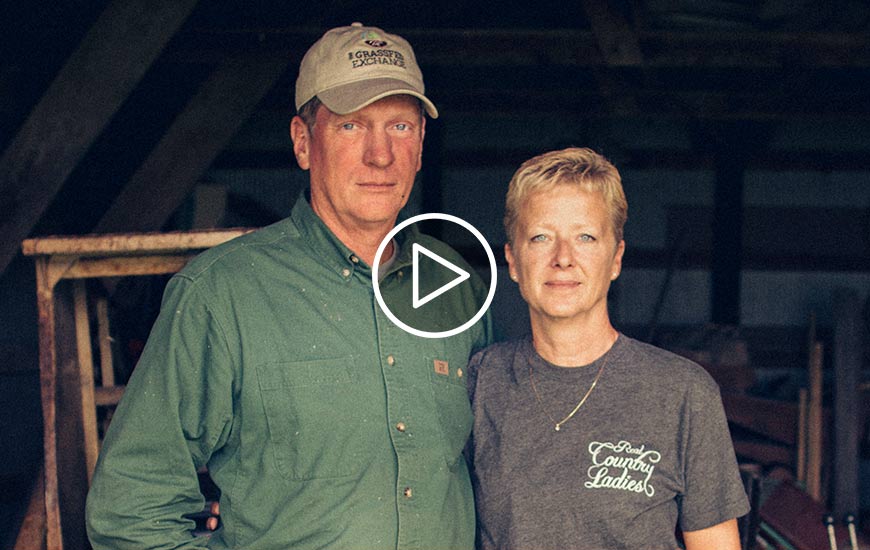POWERED BY THE GLOBAL HEALTH EDUCATION INITIATIVE
GMOs: Engineering the Nature out of Humanity

By: Dr. Zach Bush
(Co-authored by Dr. Peter Cummings)
Genetically Modified Organism (GMO):
an organism whose genome has been engineered in the laboratory in order to favor the expression of desired physiological traits or the generation of desired biological products.
Our rapidly growing global population has become a rationale for the global rollout of genetic engineering and CRISPR gene editing technology. In recent decades, we have justified the nearly universal acceptance of genetic engineering among regulatory agencies, scientists, and farmers. The result has been a direct and indirect rewriting of the biology of life on earth. The manipulation of food sources has become so commonplace the terms ‘GMO’ and ‘Non-GMO’ have supplanted the public’s understanding of health implications from genetic engineering and gene editing.
The fact that we have developed the ability to pluck single genes out of the vast DNA libraries held within every cell and reinsert those in other species is an extraordinary technological accomplishment. Those species have never been permitted to carry these genes in their billions of years of development. One could imagine many ways that we might use such a technology to benefit the planet. Take our crops for example: what if we had turned this technology toward improving transport of nutrients from mycelium to root fibrils, to human consumers with genes that improve the bioavailability and metabolism of such nutrients? Or we could have focused the attention on reducing drought susceptibility to resolve the massive hunger throughout Sub-Saharan Africa and other developing cultures.
Instead, we turned this technology almost wholly to improve the delivery of harmful chemicals into our food production systems.
In the US, over 90% of the soybeans and over 85% of the corn grown are genetically modified to tolerate direct application of Roundup and other glyphosate containing herbicides.
We are the result of nature and its inherent nurture.
Within the Global Health Education series, we often discuss the perception that our existence is something separate from nature and how that belief has led us to develop a deep-rooted fear of death. In turn, our fear of death has driven us to view nature as a threat to life, rather than an essential substrate for life.
To mitigate this threat, we have created language and innovative technologies to give the perception of human control in our efforts to ‘conquer’ or ‘tame’ nature. We have advanced science and technology with the intent of bettering human life on Earth, only to overtly abuse that technology to exploit the environment and sterilize our world. Ironically, this effort has turned the soil we need to grow food, the air we need to breathe, and the water we need to thrive into a toxic brew of deadly chemicals.
But, as we have learned, we are not separate from nature. Our bodies are an integral part of a complex system where we are no less a part of nature than the roots of a plant, the fruits of a tree, or a butterfly that pollinates those flowers. We are of the soil, of the air, and of the water. Despite these seemingly obvious fundamental truths, we are accelerating our distance from these limited resources. Among the most profound actions we have taken against these building blocks of nature is the advent and application of genetic engineering and gene editing technologies.
As scientists, our training keeps us from seeing the whole picture of biologic systems that allow life to occur on our precious planet. We unwittingly wield technologies that interfere with forces beyond our comprehension. Despite our intentions, there is no way to predict the consequences of our actions.
What is clear: for every action we make against the nature of our planet, we produce an equal and opposite reactive force intended to restore the natural system to balance. When our collective human behavior puts us in stark opposition to life on earth, the biology of our planet necessarily, and perhaps appropriately, responds against us.
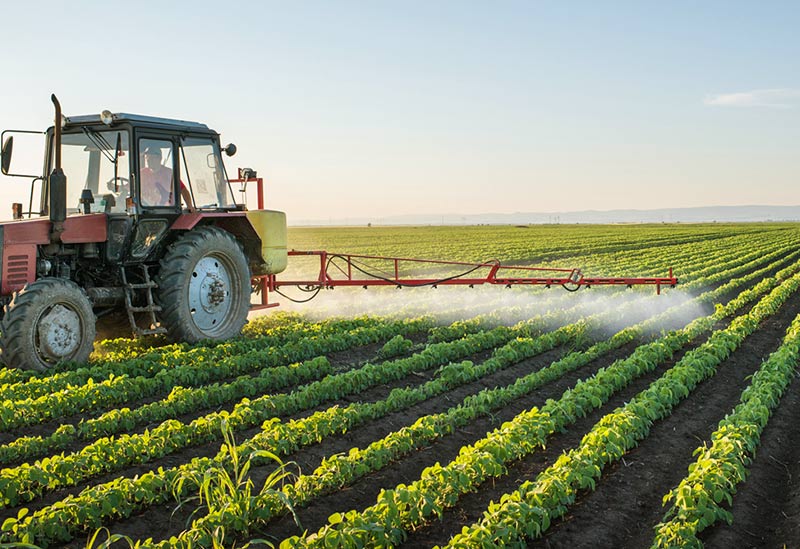
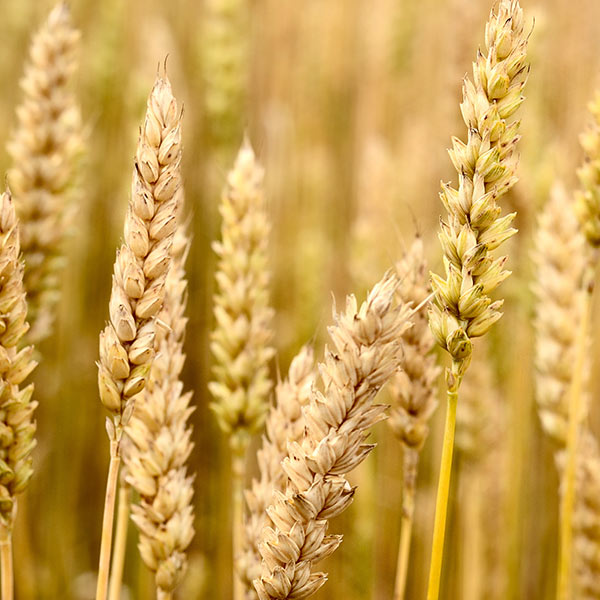
Effects of GMOs
Through this GMO epoch, we have devised more and more toxic combinations of chemical warfare to kill the weeds and pests from the comfort of the driver cabs of giant farm equipment. The result is two generations of commodity crop farmers that rarely set foot on the thousands of acres they spray chemicals into. For those that remain in more manual food crop production, the GMO-enabled chemical food production process has become so toxic that constant turnover of labor via migrant farmers and the use of undocumented foreign labor has been necessary. These tactics distance farm owners and state regulators from any responsibility for the health consequences of medium and long term exposure to the application and harvesting of these chemical inputs. According to the Agriculture Department, nearly half of crop hands in the US are undocumented immigrants. The New York Times reports growers and labor contractors estimate it is closer to 75 percent.
Every time we spray Roundup, 2,4-D or the newest GMO Bayer product, Liberty Link, we forever alter the soil and the genome of the microbiome of weeds and nearby plants, as well as the animal and human food consumers. In parallel to the genetic consequences of widespread use of GMOs across the planet, we create global deprivation of nutrients at all levels of biology on earth. Glyphosate, the active ingredient in RoundUp, and the most ubiquitous herbicide and antibiotic on the planet also functions as a potent chelation agent, locking up the nutrients within soil, plant, and water systems such that we can now find ourselves in the equivalent biologic state of starvation in the midst of the most extreme caloric excess that humanity has ever produced. We have spent centuries, if not millennia, assuming that we are the ordained masters of nature, free to exploit, manipulate, and with domineering force, extract her resources for our own comfort and wealth. With the advent of the GMO epoch, we have accelerated our capacity to manipulate nature at a rate unimaginable in any other time. Today, we are seeing the consequences of our meddling.
In human history, we have never seen an explosion of chronic disease equivalent to today’s health crisis.
This nearly simultaneous epidemic of chronic disease began in the mid 1990s as a direct result from a globally occurring environmental shift. Chemical farming and oversaturation of GMOs are the culprits, where they have altered our environment to the point of decimation to our immune systems.
1 in 4 people suffer from allergies
1 in 3 people are obese
1 in 2 people will face cancer before they die
Autism spectrum disorder has risen from 1 in 5,000 children in 1975, to 1 in 36 in 2016, and we are on target to experience 1 in 3 children with Autism by 2035.
This nearly simultaneous epidemic of chronic disease began in the mid 1990s as a direct result from a globally occurring environmental shift. Chemical farming and oversaturation of GMOs are the culprits, where they have altered our environment to the point of decimation to our immune systems.
The History of GMOs

It wasn’t until World War II when the US began growing food again. By the end of the war, Americans grew 45% of the nation’s food chain in their own backyard gardens.
At this point, farmers also began using excess petroleum as a chemical fertilizer, convinced that fertilizing crops with chemicals saved time, increased yield, and created healthier, greener plants.
During this Green Revolution of the 1960s, farmers witnessed greener planets, but they certainly weren’t healthier — they were now weak, lacking major nutrients and becoming prone to insects, weeds, and viruses. The solution was to add more chemicals. In 1974, the introduction of the herbicide glyphosate initiated our convenience-based chemical food chain, setting the stage for the GMO era.
By 1995, the EPA approved the first insecticide-producing crop, and the following year, genetically modified herbicide and pesticide-resistant crops debuted. Since then, we have devised countless potential uses of genetically engineered technology, including disease and drought resistant plants and animals with enhanced growth properties.
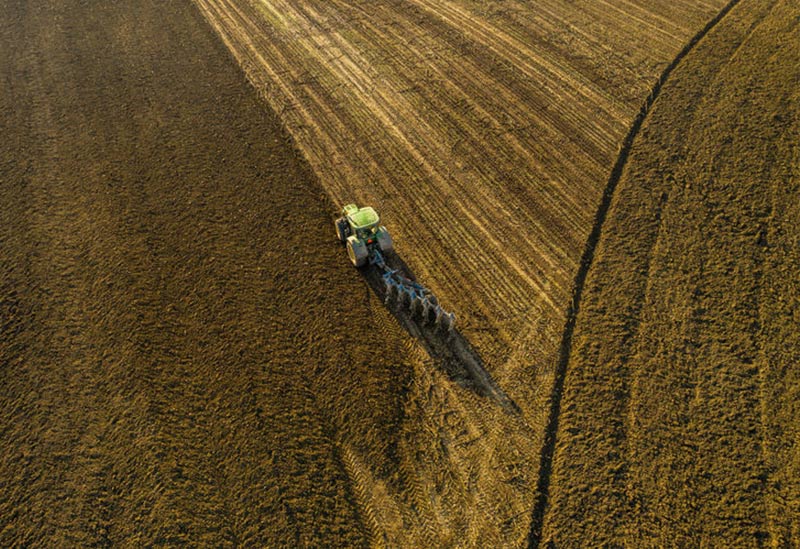

The GMO Debate
The most widely used commercial pesticide today is an herbicide called Roundup. It’s active ingredient, glyphosate, inhibits soil, plants, bacteria, and fungi from producing several essential amino acids by blocking the shikimate pathway. Glyphosate also deletes the production of alkaloids from plants, which are the natural medicinal features in our food.
The chemical industry claims that since humans lack this enzymatic pathway, there is no target for glyphosate in our species — however a healthy human body wholly depends on these essential amino acids to thrive, since we cannot produce them ourselves. Further, by ingesting glyphosate, we see direct injury to the protein structure that holds our gut lining together. Every time we breathe, eat, and drink this toxic chemical, our gut leaks, and our immune system gets overwhelmed.
Today, glyphosate is made by nearly every chemical company in the world. We use 4.5 billion pounds globally, yet statistics show that less than 0.1% of Roundup actually hits a weed.
Since glyphosate is a water-soluble toxin, the other 99.99% infiltrates nearly everywhere across the Earth’s ecosystem, including our soil and running water.
In other words: We essentially started drinking Roundup in the 1990s. Within the US, the Mississippi River alone collects more than 80% of the entire country’s Roundup. It’s no surprise that the last 90 miles of the river are called Cancer Alley, seeing the highest rates of cancer in the entire developed world.
The prevalence of cancer and glyphosate are inextricably linked. Recent cancer research shows evidence of naturally-occuring bacteria and fungi in the soil that produce a similar looking chemical as chemotherapy. Additionally, we can now predict the appearance of any type of cancer by the absence of specific bacteria in the gut. Meaning, bacteria and fungi in our gut, sourced from nutrient-rich plants and soil, can serve as our best natural medicine.
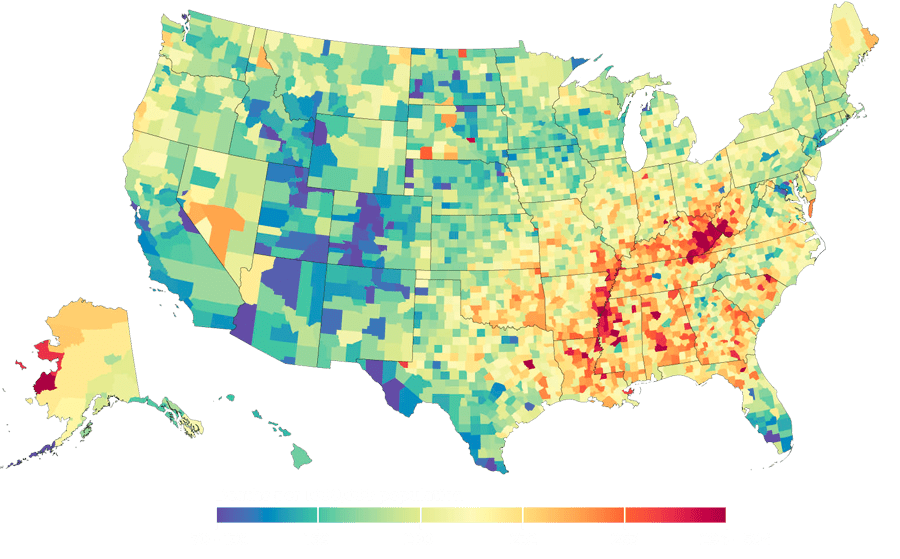
Dangers of Genetic Engineering
Instead, we continue to consume a chemical that causes us to lose our self identity between the outside world and our immune system. Couple this with our over-reliance on packaged and processed foods, created with chemically-altered compounds and sugars — our physiology as mammals simply cannot handle it. The result is an epidemic of autoimmune and other chronic diseases at the micro level, timed in synchronicity beginning in 1996. On the macro level, not only do we see a loss of our self identity as human beings, but our crops, produce, and livestock suffer as well.
For instance, genetically modified corn that grows across a ten thousand-acre chemical farm hardly has any consciousness, nutrients, or medicines. Our livestock then consume that corn, resulting in weak and sickened cows, which we then eat. The plants that the animals ate were stressed, the animals themselves were on the verge of death, and then we put that in our mouth in the form of a hamburger. It’s no wonder why an hour later, we experience bloating, indigestion, or even a panic attack. A stressed food chain means a stressed consumer.
We are coming to see how destructive the introduction of Roundup into our environment has been, but rather than come to an acceptance of the danger, we have instead engineered plant genomic modifications which are designed to make plants less susceptible to the toxic effects of herbicides. The horror of all this is that these genetically modified plants are designed to be used in conjunction with and often enhance the actions of cancer-causing agents such as glyphosate.
One example of this genomic modification is LibertyLink. LibertyLink encompasses a group of genes isolated from two species of Streptomyces bacteria. When the genes are inserted into a variety of plants such as corn, soybeans, cotton, canola, it renders them resistant to various herbicides. Resistance is achieved by preventing herbicides from binding to and inhibiting the enzyme glutamine synthetase. Glutamine synthetase is an important enzyme that allows plants to make amino acids vital to the human diet. When the enzyme is inhibited by herbicides, the plant cannot produce these important amino acids, depriving us of necessary dietary nutrients.
The LibertyLink genome may prevent herbicides from inhibiting glutamine synthetase leaving nutrients intact, but it also allows the toxic herbicides not binding to the enzyme to accumulate within the plant. These herbicides are later ingested in our diets.
The desire to increase crop yields isn’t limited to genomic modification of plants, but also genetic engineering of the very soil in which they grow. This is because increased crop production has led to the over cultivation of land, which has depleted the soil of nutrients needed for healthy plant life. The nutrient depletion in soil has done great damage to the vital symbiotic relationship between the microbiome and plant life.
Impacts to Soil, Plants, and People
Recently, these efforts nearly led to disaster. In the 1990’s, there was an effort to release a genetically engineered soil bacteria named Klebsiella planticola into the environment. What was thought to be a bacteria, which would enhance the growth of crops, turned out to be a monster that would have killed all plant life on Earth. A reported lack of oversight and poorly controlled scientific studies almost causes an ecological disaster from which there would be no recovery.
With the illusion of successfully circumventing the impending food security crisis on our planet by artificially altering the genes of crops and soil, science has moved on to investigating ways we can genetically modify animal food sources. While these approaches to increased food production are still under investigation, they are nearing a point where they will be introduced into the environment, and it is at this juncture we have an opportunity to prevent potential disaster.
One of the most developed genetically modified animal food sources is salmon. A laboratory in Canada has developed salmon with increased activity of growth hormone, allowing the fish to grow much larger— and at twice the rate— than what is seen in nature. Currently, these salmon are living in farms in Indiana and are ready to be introduced into our food chain. The FDA gave approval for the distribution of these salmon as a food source, despite numerous groups raising concern about the effects on natural salmon populations, should the genetically altered fish escape into the wild. At the center of the discussion is the USDA’s National Bioengineered Food Disclosure Standard (NBFDS), which some claim is ambiguous and contains numerous exemptions. The status of when we will see these fish introduced into our food chain is uncertain. The FDA has assured the public that these fish are sterile females and would not be able to breed if introduced into the wild. But, they’ve said nothing about the genetic knock-off effects in that species or those consuming this GMO meat in our food.
Thinking about all of the ways we’ve disrupted plant and animal life should give us pause when we consider modifications of the human genome. Most pressing in our world today is the use of DNA and RNA vaccines. We already know that federal regulations are ambiguous and lack transparency, but what happens to those regulations when genetically modified products are fast tracked? As we stand on the precipice of another great extinction, we should consider all of the ways in which we have forced our will on to nature and remember: nature will react. It’s best to remember, as the saying goes, “the road to Hell is paved with good intentions” and reflect on how we have negatively affected our health.
With a majority of the population struggling with obesity, weight issues, and collapsing metabolism, we often feel at war against our food. We’ve created this same battle mindset in our own farming practices, believing we have to kill all the bacteria, fungi, and pests, when in fact, what we’re really doing is creating monoculture and wiping out biodiversity.
The Good News
The good news is that identifying a problem is so much of the solution. As consumers, you and I are the answer. First and foremost, by choosing to only buy organic or regeneratively grown food, we can force all chemical farming to lose its financial stability and become obsolete. All it takes is an increase in the American purchasing power from buying only 5% organic food to 16%. In turn, we’ll empower our farmers and experience a nearly instantaneous rebound in human health.
By empowering our farmers, we offer them a feasible strategy to move away from chemical farming and toward regenerative agriculture practices. Founded in indigenous wisdom, regenerative agriculture focuses on rebuilding organic matter and living biodiversity in the soil. The effects produce nutrient-dense food year after year, while sequestering excess atmospheric carbon underground to reverse climate change. In the end, the overall value of organic crops increases, making product value the priority over the conventional method of valuing yield.
In my journey as a physician, once I came to the realization of the inseparable connection between soil health and human health, I founded Farmer’s Footprint, a non-profit dedicated to accelerating the universal adoption of regenerative land management for the health of people and the planet. I call on you to join me. Get involved in the regenerative movement in any way you can. Start with our documentary and consider donating to the cause here.
Right now, it seems that the root cause of disease within our species and planet is the loss of human awareness of where we have come from, and to what co-creative purpose and potential our unique consciousness might allow us to achieve. Our ultimate healing process may begin in our realization that we are all one — life on earth in its fractal and multifaceted expression, all on one mission to find truth within ourselves and one another. If a few of us can become aware right now, we have the opportunity to create a lasting ripple effect among our families, communities, and the entire planet. If we can extend this to our children, we can make room for the next generations to grow the richest foods to support the healthiest humanity that that Earth has ever seen.

Donate to
Farmer’s Footprint
Take Action
WEBINAR Replay

POWERED BY THE GLOBAL HEALTH EDUCATION INITIATIVE
In this webinar, Dr. Zach Bush discusses the history of GMOs, their detrimental impact to our environment and health, and what we can collectively do to affect change. Enjoy this exclusive, free webinar replay.

